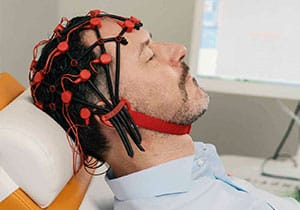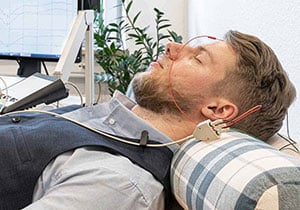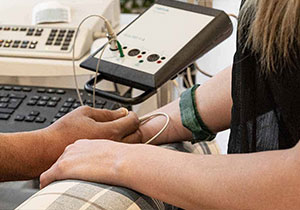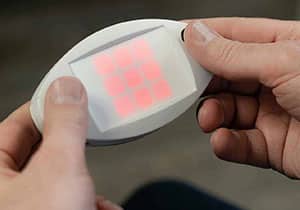
Emotional disturbance
In polyneuropathy, the peripheral nervous system is affected (peripheral = on the edge). The peripheral nervous system (PNS) refers to all nerves outside the central nervous system (CNS), e.g. the fine branches in the skin and muscles. There is no reliable data on the frequency of polyneuropathy, but it is estimated to be around one per 2,000 inhabitants worldwide.
Symptoms and causes
The transmission of sensory stimuli to the brain is disrupted. Due to the length of the nerves in the legs and arms, symptoms often occur here. The sensory nerves that tell the brain about the position of limbs, touch and sensory impressions in general are disrupted.
This leads to:
- Sensations such as tingling or burning (“formication” on the skin).
- Reduced sensations such as numbness and weakness.
- False sensations, such as pain and (false) temperature sensations.
The causes of polyneuropathy often lie in other diseases. Common triggers are
- Advanced diabetes (diabetic polyneuropathy), where high blood sugar levels damage the nerves in the long term.
- Chronic alcohol abuse(alcoholic polyneuropathy), due to the nerve-damaging effects of long-term consumption.
- Other causes include infectious diseases, metabolic diseases, malnutrition (vitamin deficiency), exposure to toxins or medication or hereditary diseases.
Consistent treatment of the underlying disease is the most important thing to combat the symptoms in the long term. Targeted treatment options should be used to prevent progressive nerve damage. We advise those affected and offer a variety of modern treatment methods.




